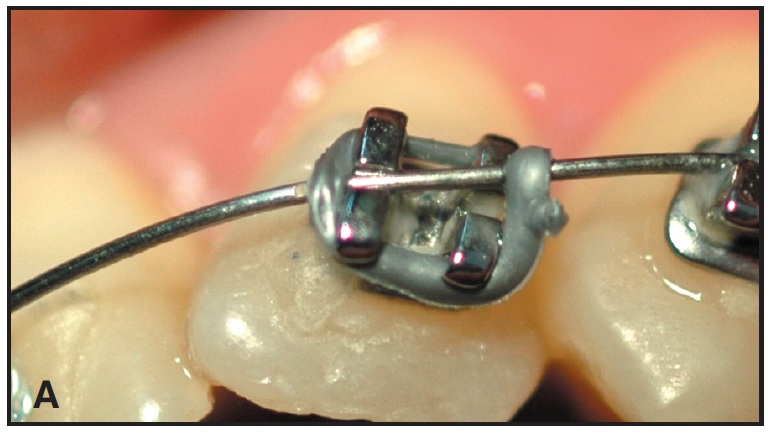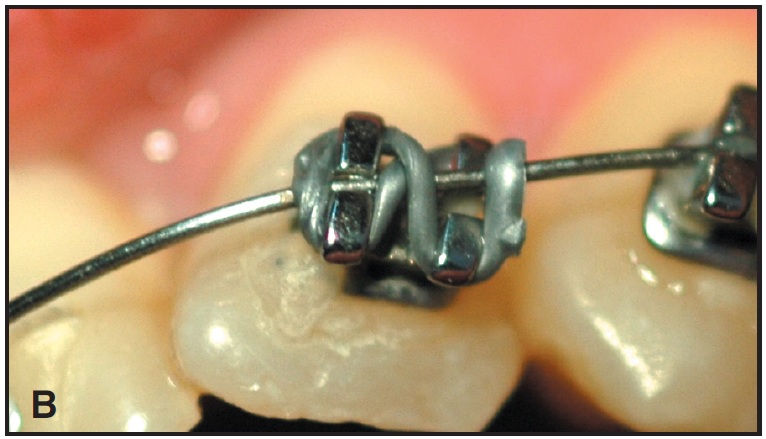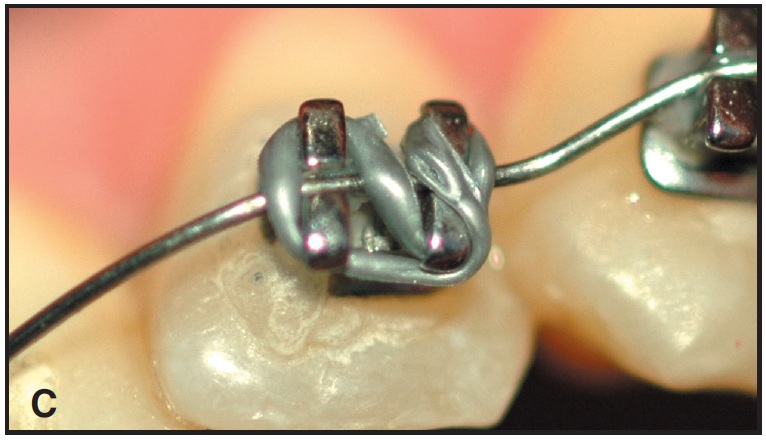Traditional elastic O-ring ligation with twin brackets often fails to correct severe malrotations because of the inability to fully seat the archwire into the bracket slot (A). The clinician is faced with the decision whether to step down to a lighter nickel titanium wire or conventionally ligate the wire to the tooth, which is time-consuming and technique-sensitive and may result in debonding.
Alternatively, the clinician may choose to use the elastic figure-8 technique, in which the O-ring criss-crosses over the bracket (B). Twisting the O-ring in this manner increases its elastic tension, which helps seat the archwire, but because the force levels of the O-ring are symmetrical, they may still be inadequate to fully seat the wire.
Similar articles from the archive:
- A New Low-Friction Ligation System August 2005
- TECHNIQUE CLINIC Esthetic and Hygienic Ligation February 2000
- Twist Ligation: A Technique to Reduce Archwire Binding March 1996


I use a method of asymmetrical O-ring ligation that is a slight modification of the elastic figure-8 (C):
- On the side opposite the rotation, pull the O-ring over the two vertical tie wings.
- Pull the O-ring under the incisal tie wing on the rotation side. The O-ring should now seat over the two vertical tie wings on the side away from the rotation.
- Pull the O-ring under one vertical tie wing on the rotation side (this step distinguishes the asymmetrical tie from the figure-8 tie).
- Wrap the O-ring over the other vertical tie wing on the rotation side. By stretching the O-ring behind the tie wing, rather than crossing over the bracket slot, an asymmetrical force load is created to help fully seat the archwire into the bracket slot.



